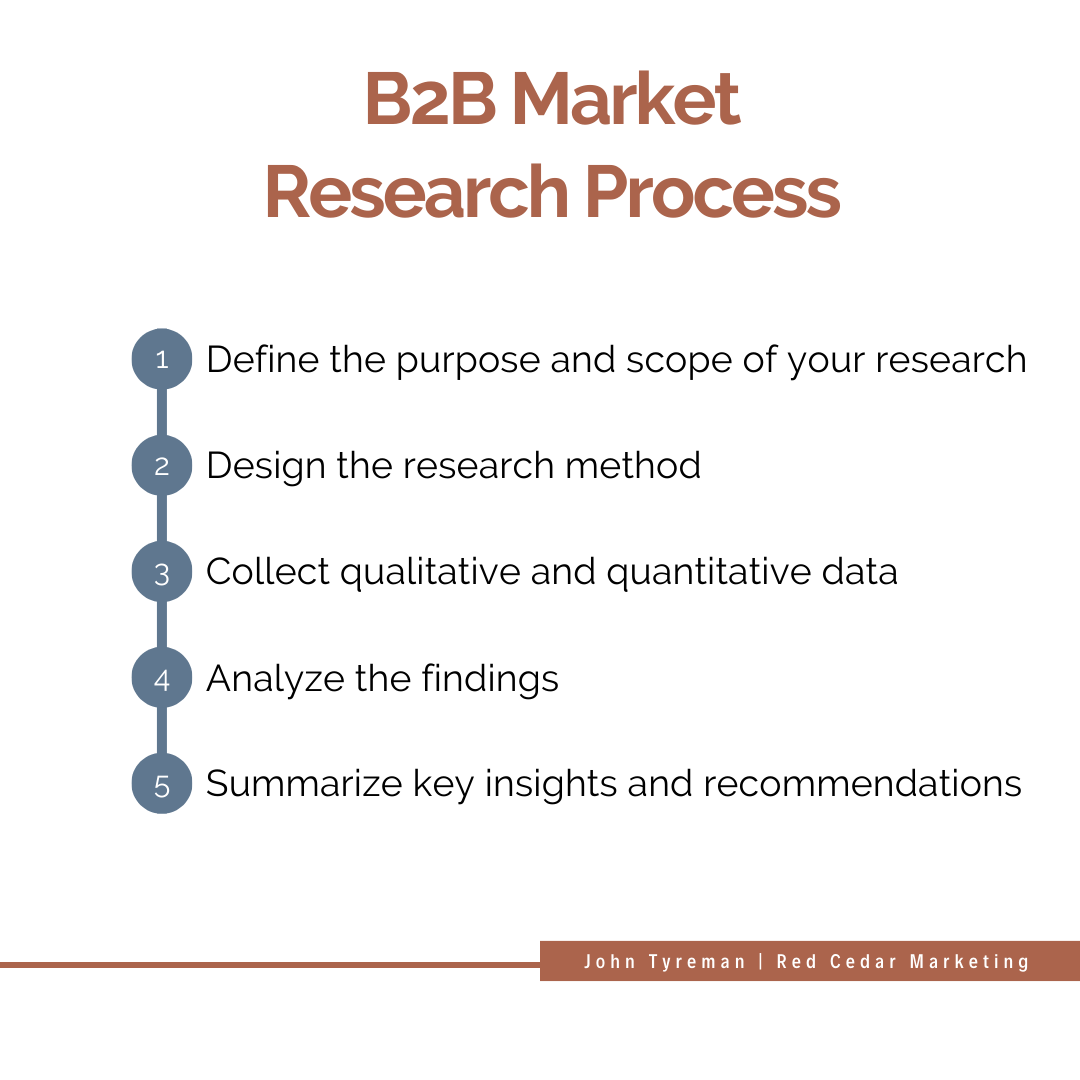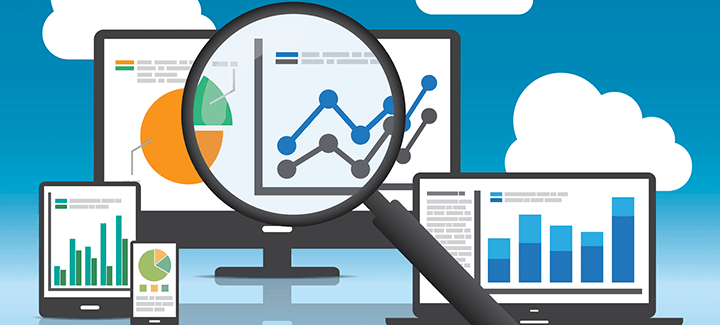The Crucial Role of B2B Market Research in Driving Business Success
As a business-to-business (B2B) company owner, conducting effective market research is absolutely vital for your growth and success. It goes beyond simply gathering information; it provides invaluable insights into your industry, target market, and competitors. By leveraging these insights, you can make informed decisions and develop strategies that will propel your business forward. Market research plays a pivotal role in shaping your decision-making process and strategy formulation. By staying up-to-date with the latest trends and dynamics within your marketplace, you gain a competitive advantage. This knowledge allows you to identify untapped opportunities for expansion or diversification while assessing the demand for new products or services before committing resources to their development.
Defining Your Research Objectives
To conduct impactful B2B market research, it is essential to establish well-defined and measurable research goals. These objectives will serve as your compass throughout the entire research process, ensuring that you gather the right information to make informed decisions for your business. Here are expert tips on how to define effective research goals:
- Understand the Purpose: Begin by gaining a deep understanding of why conducting market research is crucial for your company. Are you aiming to launch a groundbreaking product or service? Do you seek insights into customer preferences to enhance your existing offerings? By clarifying the purpose behind your research, you can set specific and targeted goals that align with your overall business objectives.
- Identify Key Questions: Delve into the specific questions that need answering through comprehensive market research. What do you need to know about your target audience, competitors, industry trends, or customer satisfaction levels? Jot down these key questions, as they will act as a roadmap when designing and executing your research study.
- Make Them Measurable: It’s vital that your research goals are measurable so that progress can be tracked and success evaluated effectively. Instead of stating “understand customer preferences,” rephrase it as “determine the top three factors influencing purchasing decisions among our target audience.” This approach allows for concrete data collection and analysis methods.
- Consider Timeframe and Resources: Take into account both the timeframe in which results are needed and the resources available for conducting thorough market research. Be realistic about what can be achieved within these constraints while still ensuring meaningful insights are obtained.
- Prioritize Objectives: If there are multiple objectives at hand, prioritize them based on their importance and relevance to achieving your business goals successfully. This strategic approach helps focus efforts on gathering data specifically related to those high-priority areas.
Uncovering Your Ideal Market
To conduct effective B2B market research, it is essential to have a deep understanding of your target market. By identifying and segmenting your audience, you can gain valuable insights into their unique needs, preferences, and behaviors. This knowledge will empower you to tailor your products or services specifically to meet their requirements, resulting in increased customer satisfaction and business success. Here are the key steps to follow when uncovering your ideal market:
- Dive into comprehensive industry research: Begin by immersing yourself in thorough industry research. Analyze current trends, competitors’ strategies, and market dynamics to identify potential growth opportunities.
- Craft detailed buyer personas: Develop detailed profiles of your ideal customers based on demographic information such as job title, company size, location, and industry. Understanding who your customers are will enable you to address their pain points effectively and provide tailored solutions.
- Segment your audience strategically: Divide your target market into distinct segments based on shared characteristics or behaviors that align with your business goals. This segmentation could be done by industry verticals, company size, geographic location, or any other relevant criteria.
- Gather qualitative insights: Conduct interviews or focus groups with existing customers or prospects within each segment to gather qualitative data about their needs and preferences. This will help you understand what influences their purchasing decisions and how they perceive value.
- Collect quantitative data at scale: Utilize surveys or questionnaires to collect quantitative data from a larger sample size within each segment. These numbers will provide statistical evidence of trends and patterns that can guide decision-making processes.
- Thoroughly analyze the gathered data: Once you have collected both qualitative and quantitative data from various segments of your target market, meticulously analyze it using appropriate tools such as statistical software or CRM systems. Look for patterns, correlations, outliers, etc., which can inform strategic decision-making.
- Fine-tune your target market strategy: Based on the insights gained from analyzing the data, refine your target market strategy. This may involve adjusting your product offerings, pricing, messaging, or distribution channels to better align with the needs and preferences of your target audience.
Choosing the Right Research Methodology
When it comes to conducting top-notch B2B market research, selecting the right methodology is absolutely crucial. The methodology you choose will determine how you gather and analyze data, ultimately shaping the valuable insights you gain from your research. As experts in this field, we’re here to guide you through the decision-making process by highlighting some key considerations:
- Understand Your Research Objectives: Before diving into any methodology, it’s essential to have clear and measurable research objectives in place. Are you aiming to collect quantitative data through surveys or uncover qualitative insights through interviews? By understanding your objectives upfront, you’ll be able to make a more informed decision.
- Consider Your Target Market: Different methodologies may be better suited depending on your target market. For instance, if you’re focusing on a niche industry with limited participants, conducting in-depth interviews or organizing focus groups might provide deeper and more meaningful insights compared to large-scale surveys.
- Evaluate Available Resources: Assessing the resources at your disposal is vital when choosing a research methodology. Take into account factors such as budget constraints, time limitations, and available personnel who can effectively execute the chosen method.
- Explore Various Methods: In B2B market research, there are several tried-and-true methods at your disposal, including surveys, interviews, focus groups, observational studies, and secondary data analysis. Each method has its own strengths and weaknesses; therefore, it’s important to explore multiple options before settling on one.
- Tailor Your Approach: Remember that there is no one-size-fits-all approach when it comes to B2B market research methodologies. It’s crucial to tailor your approach based on specific industry dynamics and the unique business needs of each project.

Uncovering Insights Through Data Collection and Analysis
Collecting and analyzing data is an essential aspect of B2B market research. It empowers you to gain valuable insights that can shape your business decisions and strategies. In this section, we will explore various methods for collecting data and provide expert guidance on how to effectively analyze the information gathered.
- Effective Data Collection Methods:
- Surveys: Conducting surveys is a powerful tool for gathering quantitative data from your target audience. Whether online or offline, designing surveys with specific questions related to your research objectives allows you to obtain valuable insights.
- Interviews: Engaging in-depth interviews with key stakeholders, such as industry experts or decision-makers, provides qualitative insights into their experiences, preferences, and challenges.
- Focus Groups: Organizing focus groups enables you to gather opinions and perceptions from a select group of individuals who represent your target market.
- Observations: By directly observing customer behavior or industry trends, you can gain invaluable insights into their needs, preferences, and purchasing patterns.
- Extracting Meaningful Insights Through Data Analysis:
- Streamline Your Dataset: Ensure accuracy by removing any irrelevant or duplicate entries from your dataset during the cleansing phase.
- Categorize Responses: Group similar responses together based on common themes or variables relevant to your research objectives.
- Utilize Statistical Techniques: Apply advanced statistical techniques like regression analysis or correlation analysis within your dataset to identify relationships between variables.
- Visualize Findings Creatively: Transform complex information into easily digestible visual representations using charts, graphs, or infographics. This approach makes it simpler for decision-makers to comprehend and act upon the insights.

Leveraging B2B Market Research for Business Growth
As experts in the field of market research, we understand the importance of effectively interpreting and implementing research findings. Once you have collected and analyzed data from your B2B market research, it’s time to extract meaningful insights that can guide your business strategy. Let me share with you some valuable tips on how to do just that.
- Embrace the Context: Before delving into the specifics of your research findings, it’s crucial to grasp the bigger picture. Consider industry trends, competitor analysis, and customer preferences as part of the broader context. By doing so, you’ll be able to make sense of the data within a larger framework.
- Uncover Key Patterns: Look for patterns or trends that emerge from your research findings. Are there any common themes or correlations? Identifying these patterns will provide invaluable insights into customer behavior, market dynamics, and potential growth opportunities.
- Focus on Actionable Insights: Not all insights are created equal; prioritize those with practical implications for your business strategy. These actionable insights should directly inform decision-making processes and drive positive change within your organization.
- Collaborate Across Departments: Market research is a collaborative effort involving stakeholders across various departments, such as marketing, sales, product development, and customer service. Share your research findings with key decision-makers in these areas. Their input will help shape strategies based on a holistic understanding of the marketplace.
- Implement Changes Gradually: Rather than making abrupt changes solely based on research findings alone, it’s often more effective to implement changes incrementally. This approach allows you to test hypotheses, test new strategies, and monitor their impact over time. By taking this measured approach, you can minimize risks associated with sudden shifts while maximizing opportunities for success.
- Track Progress & Adapt Strategically: After implementing changes based on your research findings, it’s essential to regularly track progress. Monitor key performance indicators (KPIs) and compare them to pre-research benchmarks. This evaluation will help you gauge the effectiveness of your strategies and make any necessary adjustments along the way.




